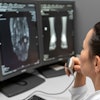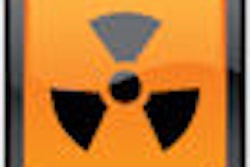VIENNA - Few healthcare administrators ever get the opportunity to entirely rebuild their radiology department from the ground up. But administrators in Canada got just such a chance, and they shared their experiences in a presentation at this week's European Congress of Radiology (ECR).
St. Joseph's Healthcare at McMaster University in Hamilton, Ontario, is a multisite hospital serving 1.4 million people. The radiology department at St. Joseph's was originally constructed in the 1950s and, as ECR delegates heard, "was not meeting current standards of care and practice -- and there was a real issue in terms of its competitive capabilities," according to David Wormald, assistant vice president at St. Joseph's.
Wormald embraced the prospect of revamping the hospital's imaging operations when it arose, using lean management techniques to recreate a cutting-edge facility that maximizes quality and efficiency while boosting financial performance. Wormald described his experiences in a seminar on hospital administration on Saturday.
Lean management is a philosophy that calls for maximizing organizational efficiency, deploying resources principally to create value for the end "customers," in this case patients and their families, and hospital employees. All waste is eliminated, while every structural decision is analyzed for its effects on productivity.
Through a collaboration with "hospital-of-the-future" specialists at GE Healthcare (Chalfont St. Giles, U.K.), Wormald implemented a redevelopment project that would see clinical efficiency increase by 54% and patient "travel" (navigation and patient journeys within the unit) become 80% more efficient. The project also improved patient and employee satisfaction and optimized several key quality, risk, and safety issues -- in addition to providing a financial payoff.
"From a financial perspective, the lean management approach enabled us to find around $300,000 in time savings and increased our operating performance," he noted.
Innovations included the use of natural light, noise reduction, "warm" construction materials, easy navigation, and a dedicated patient information concierge. Every design decision was informed by lean evidence-based principles to create an ambiance that reduces anxiety and boosts satisfaction.
"The diagnostic imaging department went through a complete transformation process and is now well positioned to cater for future demands," he told ECR delegates. "The ability to achieve these efficiencies and expand our facility were necessary in our current environment, where radiology departments are set to come under increasing pressure as service demands rise in the future."
By Rob Skelding
AuntMinnie.com contributing writer
March 8, 2009
Related Reading
Lean principles and ergonomics aid imaging management, April 30, 2008
Copyright © 2009 AuntMinnie.com



















